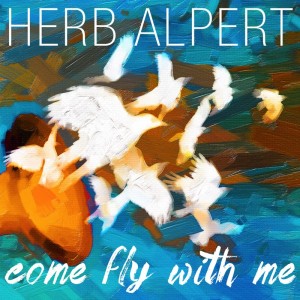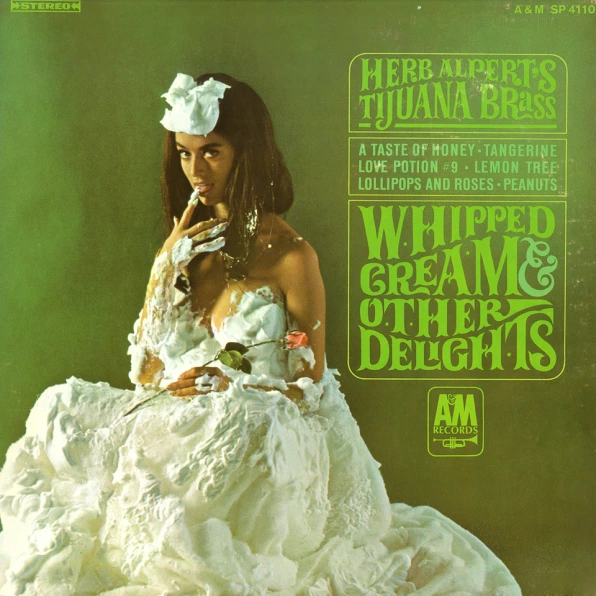“You hear three notes and you know it’s Herb Alpert.”
It’s a glowing compliment for any musician, but when the endorsement comes from fellow trumpeter Miles Davis, it means you’ve transcended mere playing–and have arrived at a special place in the history of music.
A particular kind of creative restlessness has been the support beam to Alpert’s lofty success over the decades: nine Grammys; 72 million albums sold; cofounder of A&M records, signing artists like The Carpenters; and a National Medal of Arts awarded by President Obama.
Most musicians would feel content to retire with a resume of that caliber, but Alpert is still churning out music–his most recent album Come Fly With Me is out September 25 and Fast Company has the exclusive stream below–and also sculptures, as well with an exhibit of bronze totem poles currently on display at Chicago’s Field Museum.
Whether it’s music, painting, or sculpting, it all starts with deep passion for Alpert–an urge to create regardless of recognition or accolades–and ends with never feeling satisfied. Here’s how he keeps the creative flame brightly lit.
FIND–AND STOKE–YOUR PASSION
Alpert began playing the trumpet when he was 8 and 72 years later, it’s still “a good friend” to him.
“I play it just about every day of my life–not because I have to, but because it’s something that gives me pleasure,” Alpert says. “That’s what I tell kids when they ask what’s the secret to being successful in the music industry. If you’re not really passionate about what you’re doing or if you’re doing it because there are some benefits like attracting chicks, forget it, man. While you’re sleeping someone else is practicing who wants the exact same thing you want.”

LEARN FROM THE BEST–THEN MAKE IT YOUR OWN
Following the sonic trail to the heart of Alpert’s style can be a disorienting path, starting from the Mexican-infused stylings of his Tijuana Brass band to a staggering solo run that’s absorbed electronica, R&B, and funk along the way. His inspiration is far flung but still tethered to his unique interpretation of jazz, which, as it happens, wasn’t always so unique.
“There was a period where I started emulating my favorite musicians–I could play a little bit like Harry James. I had a little bit of Miles Davis in me. And then I came to the “aha!”–I said, who in the hell wants to hear that? They’ve already done it. So I was looking for my own voice,” Alpert says. “When I heard Les Paul and Mary Ford’s “How High the Moon,” where Les layered his guitar a few times on this record with some other tricks, there was a sound on it. I started experimenting in my little garage with two tape machines and I was layering my trumpet and out came this Tijuana Brass sound concept.”
EXPLORE NEW FORMS
Thirty-five years ago, Alpert began fiddling with beeswax, making shapes he would have cast at foundries for nothing more than his personal enjoyment. It was another artistic avenue for him that supplemented his musical mission. But, as luck–and talent–would have it, his bronze, totemic sculptures are now making their rounds in museums.
“I started making these more symbolic totems like what [the Pacific Northwest Indians] were doing with animals and creatures coming out of the work. And then I decided, who wants to see that? They’ve already done that so I started riffing on it and doing my jazz version of what they were doing and then all of a sudden they became abstract,” Alpert says. “Jazz is an element. Jazz is that thing–that improvisational style. It’s the thing that we love about Jackson Pollock or those painters that are just putting down their feelings. I think that’s what art is all about.”

NEVER GET COMFORTABLE
It’s hard to imagine Alpert’s rise to legendary prominence without his Tijuana Brass band. The group’s first album, The Lonely Bull (1962), set the stage for a sound heavily inspired by mariachi music and bullfighting that would develop over the course of several records, peaking with 1965’s Whipped Cream & Other Delights, a No. 1 hit with a cover that’s become as famous as the tracks.

Alpert, however, was, and still is, pushing past success to new territories. All of which begs the question, “When do you know that you’ve ‘made it’?” According to Alpert: never.
“With The Lonely Bull, I said what I’m not going to do is play it sideways for the next year or so. I wanted to see if I could just keep moving forward. I want to make visual music. I want to make music that takes you some place as opposed to elevator music that’s not bad, it’s not good–it’s just there,” he says. “You never really get to where you want on an instrument. Dizzy Gillespie was a friend of mine and Dizzy used to say, ‘Tthe closer you get, the farther it looks.’ It’s a never-ending challenge.”

